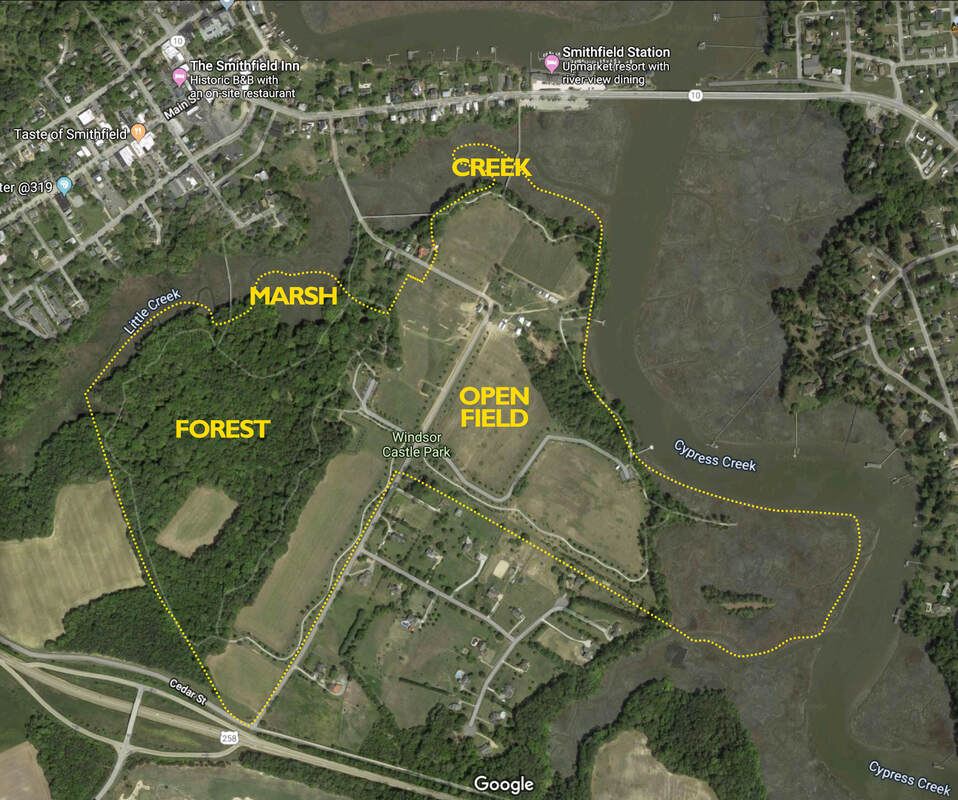Come explore the variety of areas that the park offers its natural residents. This site map of the park presents the park’s four main types of habitats which foster the rich diversity of life found in this 208-acre haven. Although each area is distinctly different from the others, they all are linked together in exchanging organisms and nutrients fostering a wonderful display of varied approaches to life.
|
Click on the name of any of the regions above to learn more about what is going on there. As you do so, you will encounter some of the plants, animals and geology of Windsor Castle Park.
|












